I’ve spent a lot of time outdoors. I spent 15 years in the Army, which involved plenty of aggressive camping in all sorts of environments. I’ve also done a lot of hiking. I’m no stranger to nights in the woods. Recently, though, I decided to do something a little different: a survival in the woods challenge.
Most of the times I’d camped out before, it was because I was already outdoors for another reason. This time I decided I’d just spend two weeks in the woods, and see how I got on. I didn’t have anything else to do, whether it was a military mission or climbing a mountain. All I had to do was survive and stay as comfortable as possible.
The challenge of living in a small forest clearing for 15 days gave a lot of practical skills a good workout – I can now keep a fire going with about half as much wood as I’d have needed previously.
More than that, though, it also taught some valuable lessons about the reality of living outdoors. Most of this is stuff we all know at some basic level, but maybe don’t fully understand until we’ve lived it. Here are the top things I took from the experience.
Shelter: More Important Than I Thought
When people think about survival, most imagine food and water first. But let me tell you—after just one night of cold, wet wind cutting through my tarp, I realized that good shelter is what really keeps you alive.
I went in with a basic setup: a tarp, some cordage, and a few stakes. Nothing fancy. I’d built dozens of shelters in the Army, so I figured I’d knock it out in ten minutes and move on. Big mistake. I spent the first two nights repositioning, adjusting, and learning the hard way what works and what doesn’t.
The biggest lesson? Location matters. That cozy-looking low spot might feel sheltered from the wind, but when the rain starts, it turns into a puddle. I ended up shifting my camp a few feet uphill and re-anchoring everything more securely.
A lean-to with a decent windbreak, placed just right, made all the difference. I also rigged a small heat reflector from logs and rocks, which helped bounce warmth from the fire back into my shelter.
You can survive without food for weeks, but one cold, wet night without decent shelter can end the whole game. Learn from The Wilderness Long-Term Survival Guide all about building a strong shelter, from a real survival expert: Nicole Apelian.
Firewood Is A Challenge
One of the first things I did when I set up my campsite was to collect all the dry, dead wood that was lying around. Any deciduous forest will have dead branches lying around, and if they haven’t been lying directly on damp ground they’re usually dry and perfect for fuel. It didn’t take long to build an impressive pile of sticks and branches.
The problem is that as impressive as that pile looked, as soon as I actually started feeding a fire it dwindled with alarming speed. After just a few days I was having to search further and further afield for more wood.
Picking up fallen branches is only a viable source of wood for a few days. In the long term you’re going to have to start cutting timber and letting it season. It’s also worth doing anything possible to save fuel. A big roaring fire might be comforting at night, but it’s also a luxury you can’t afford.
A smaller fire with a reflector built behind it will keep you just as warm, at less cost in firewood. A wood-burning rocket stove, or even a hobo stove made from a can, will let you cook efficiently while burning far less wood than an open fire.
So Is Water
When I meet other hikers they’re often surprised by how much water I carry. It seems most people carry around two liters of water with them. I have more than double that – a three-liter hydration system and two one-liter bottles. Yes, it’s heavy, but I learned in the Army that you really don’t want to run out of it.
Living in the woods quickly taught me that even five liters isn’t enough. Technically it’s enough for more than a day, but I seemed to be heading for the stream at least once, and usually twice, a day to refill all my containers.
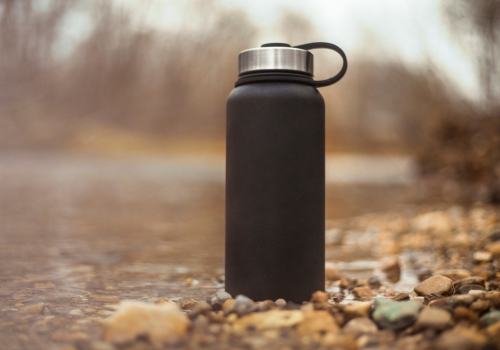
That ate up a lot of time I could have spent doing other things. If you’re going to be camping somewhere for more than a couple of days you need some kind of larger container, so you can spend less time hauling water. Even a five-gallon jerrycan would work. It’s big enough to last you at least two or three days, but can still be carried a fair distance.
A Brush with Dehydration Nearly Ended It All
Even with more water than most hikers carry, I came dangerously close to a life-threatening mistake. On Day 9, while hauling firewood under a hot, humid sun, I underestimated how much I was sweating. I was pushing hard, thinking I could stretch my nearly empty water bottles a few more hours before refilling at the stream. That was a critical error.
By late afternoon, the signs hit hard: light-headedness, a mouth like sandpaper, and foggy thinking. When I bent down to adjust my boot and nearly blacked out standing up, I knew I was in serious trouble. Dehydration was creeping in fast, and I’d ignored the warning signs.
>> How to Recognize a Heart Attack and What to Do Next
The stream was only a ten-minute walk, but it felt like a marathon. My legs wobbled, and I had to lean on trees just to stay upright. When I finally reached the water, I was so desperate I drank straight from the stream—unpurified, against every rule I’d set for myself. In that moment, survival trumped protocol.
It took hours to recover, lying in my sleeping bag, replaying how close I’d come to disaster. Five empty water containers sat in my pack, mocking my poor planning. The lesson was brutal but clear: always monitor your hydration, pace yourself, and never let your water supply run low. No amount of gear matters if you don’t respect your body’s limits.
A Lesson for Bugging In Too
Fifteen days in the wild taught me a brutal lesson: it wasn’t the lack of a solid shelter, scarce food, or even nearby predators that came close to ending me. It was the lack of water. Let that sink in. Whether you’re deep in the backcountry or facing a crisis at home, running out of water can kill you just as fast.
As a prepper, you know the unexpected is an enemy most people ignore. To avoid being caught off guard, you need to prioritize water like your life depends on it, because it does. Stockpile a generous supply, calculated smartly for you and your family. Rotate it regularly to keep it fresh.
Don’t skimp on this. Better yet, secure your water from reliable sources—ideally not the public grid. When SHTF, you want to be ready, not scrambling.
Now imagine having access to up to 50 gallons of clean water every single day—without relying on the grid. Sounds impressive, right? There’s a compact, backpack-sized device that makes this possible, even in extreme desert environments. It’s currently used by military units worldwide, and the best part? It pulls moisture straight from the air—no external power source or water supply needed.
For anyone serious about long-term water security, you might also want to check out something called The Water Freedom System. It’s been adopted by armed forces in countries like the U.S., UK, Israel, and India. It could be a game-changer for your preparedness plans. Take a closer look here.
Now let’s move on to my next conclusion after spending more than two weeks in the woods.
>> The Water You Need in a Crisis and How to Preserve It
Everything Takes Time
Part of the appeal of living in the woods is the simplicity – but that comes at a price. Modern life does have a lot of clutter, but it’s also easy in many ways. How many times have you made dinner by just putting something in the oven and taking it out when the timer pings? You can do other things while it’s cooking.
It isn’t like that in the woods. When you cook over a fire you need to check it regularly. You can never wander too far away in case the fire flares up or dies down while you’re gone. Often, you just can’t leave the fire at all. If dinner takes half an hour to cook that’s half an hour you can’t spend doing anything else.
Most tasks turn out to be time-consuming. I was spending 20 minutes a day collecting and purifying water. By the end I was spending two hours a day or more collecting firewood. Washing clothes in the stream took time. Everything took time. You need to be realistic about how much you can accomplish in a day.
Foraging: Not as Easy as It Sounds
I didn’t go into the woods expecting to live off the land entirely—but I wanted to supplement my rations and test my foraging skills. Let me tell you, finding food in the wild is humbling.
Yes, I found some wild edibles—berries, dandelion greens, plantain, a few nuts. But calories were hard to come by, and the effort-to-reward ratio was brutal. Some days I spent over an hour looking and came back with maybe 200 calories’ worth of food. That’s not sustainable.
 And unless you really know your plants, it’s risky. There were mushrooms I recognized from guidebooks, but I didn’t touch them. One mistake and you’re poisoned, alone, miles from help.
And unless you really know your plants, it’s risky. There were mushrooms I recognized from guidebooks, but I didn’t touch them. One mistake and you’re poisoned, alone, miles from help.
What worked best was foraging as a supplement, not a primary food source. The greens helped balance my diet and stave off fatigue. I also set a few basic traps, but caught nothing. That’s another skill I’ll need to revisit.
Foraging can work—but only if you’ve trained beforehand and your energy levels are still high enough to hike, search, and process. Waiting until you’re starving is too late.
Start learning your local wild edibles now. Get out there, practice ID’ing and prepping them before the SHTF. A pocket field guide is worth more than gold in a crisis. My top pick? The Forager’s Guide to Wild Foods. It’s packed with critical intel like:
- The Plant That Can Save Your Life in a Crisis
- What to Do ASAP When You Spot an Alligator Tree
- How to Find the Superweed Known as “Wild Spinach”
…plus a ton more know-how to keep you fed straight from nature’s bounty.
Love The Light
As well as the amount of time everything takes, your days effectively begin at dawn and end at sunset. It’s hard to understand what a difference electric lighting makes to your life until you have to do without it. When the sun goes down in the woods, most activities stop.
If you can’t do it in the illumination from a flashlight or lantern, you’re not doing it until the morning. I quickly learned to prioritize the things that needed to be done in daylight and the ones that could wait. Foraging for firewood was a daytime task, for example, but cutting and stacking it could be done by firelight.
Attention To Detail Matters When it Comes to Survival in The Woods
In the woods you can’t let things slide. At home, it doesn’t matter much if you want to put off doing the dishes until the morning. Your kitchen will look untidy, but there’s no harm done. Outdoors it’s a different story. Leave the dishes until morning and the chances are you’ll get woken up during the night as something comes to investigate them.
You need to wash up right away or you’ll quickly attract insects – or, worse, larger animals – to your camp. Depending on what your local wildlife is like the consequences of this range from annoying to extremely dangerous.
Every task is the same; you can’t afford to delay cleaning, repairing or even packing things away. In the woods, loose gear has an amazing ability to vanish. When you take something out of your rucksack, put it away again as soon as you’ve finished using it.
Final Thoughts
Looking back at everything I learned, one thing is crystal clear: there’s no such thing as a lazy day in the woods. Just staying warm, dry, fed, and hydrated demands most of your daylight hours—and daylight itself runs short, especially outside of midsummer.
Survival, after all, is about discipline, planning, and adapting to whatever the environment throws at you—day after day, without backup.
So when you’re planning for long-term survival—whether bugging out or bugging in—factor in the grind. Not just the gear, but the daily grind of hauling water, chopping wood, cooking from scratch, staying warm, and staying alert.
I found Dr. Nicole Apelian’s survival advice in the wild truly inspirational. I also highly recommend The Forgotten Home Apothecary, where you can learn no less than 250 natural remedies for the most common health issues!
You may also like:
How to Make the Ultimate Fire Starter That Burns Like Hell (Video)


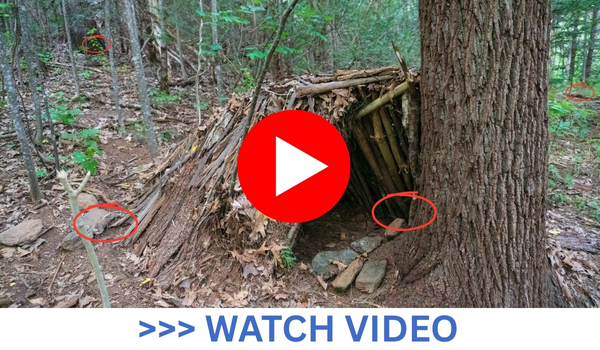
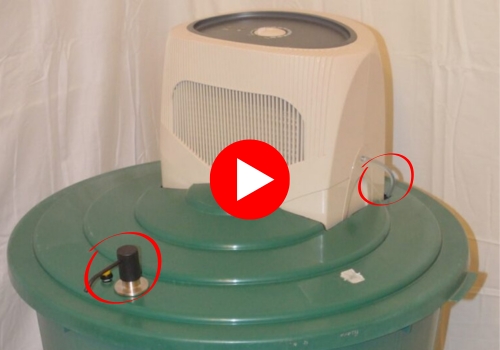










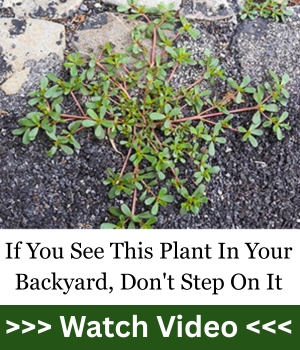


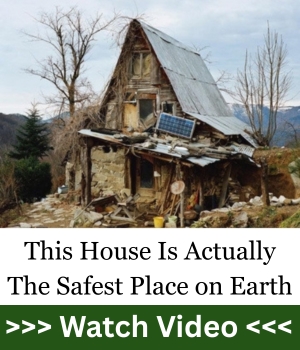

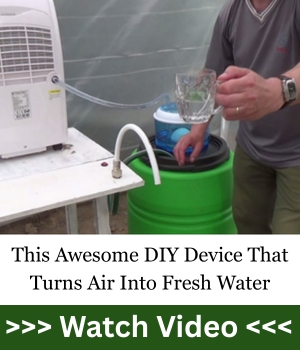





The speed firewood disappears is a major strike in having a permanent home in the woods. Sooner or later, firewood becomes a real issue. It was no wonder why American Indian tribes were nomadic.
In my area, the lack of potable water is a major concern. Transpiration bags may be a solution but it is going to take quite a few to supply daily needs.
That’s right. Firewood depletion is a big challenge for permanent woodland living, hence why many Native American tribes were nomadic.
For potable water, transpiration bags help, but multiple sources or methods like those recommended in the article, or rainwater collection might be worth exploring to meet daily needs.
Yup. bugging out is not as much fun as it sounds. Especially if you have to do it in the winter. For an extended period of time. Let’s say a year or more. And if other people have decided to do the same thing and some of them have picked the same area you have. I have no choice but to bug in. For better or worse that’s the way it is.
Indeed, bugging out can quickly turn from an adventure into a nightmare—especially in harsh winter conditions and over the long haul. The idea of sharing a limited area with others who’ve also fled there adds a whole new layer of risk and stress.
Sometimes, bugging in really is the smarter, safer choice, even if it feels limiting. It’s all about weighing the risks and being prepared to defend your home and resources. Thanks for sharing your perspective!
When we aged out of wilderness hiking and sleeping on the ground we started truck camping. We knew places on the backroads we could drive to and camp for a week without seeing anybody, but instead of trying to carry everything in a pack we had a whole truckload of food, water, beer, vodka, cooking equipment, guns, cots, etc…if we ever have to bugout it will be by truck to one of those places. Mistake to think you can survive off the fat of the land in a wilderness. 19th century explorers, homesteaders, and military expeditions traveled with wagons and mules loaded with supplies. Cattle operations had the chuck wagon.
So far as staying hydrated, desert camping taught us to sleep with a bottle of water, anytime you wake up in the night take a big drink, it makes a difference drinking before you are thirsty.
Truck camping is a smart evolution. Mobility and supply capacity matter in any realistic bugout scenario. Just keep in mind that access might be cut off fast in a real SHTF event. It’s wise to have a few backup plans in case fuel or roads become unavailable.
Howdy from high in the desert swamp,
Reading this article made me think about sign language again. If I go to the river for water or into the woods for wood or forage and come back, I can “speak” to someone for an all clear. If that person isn’t there, something isn’t right. If someone is with me gathering and sees or hears something they can tell me silently. I know this works because my team used it in UCOIN exercises. We never once turned on a radio. Silent, can’t be triangulated and can be used through binoculars. If this is a really bad time? Silence as much as possible is paramount. My team won UCOIN “games” three times. I didn’t tell anyone we had learned ASL. I was wearing hearing aids at the time and knew deafness was coming. It’s here now. I was learning ASL and taught about 50 words to my guys n gals including numbers. A couple comments on here have been water related. Clean water will be worth killing for sad to say. Warning your tribe by shouts or whistles might just get someone killed. I hope not.
Remember the Alamo
Remember 9/11
Remember North Carolina
Remember to have your soul prepared.
Hi Chaplain Dan…If i may….what were your top 10 or so words you taught during UCOIN ?
Howdy,
Words such as, man, up, down, go, in, out, water, bad, good, stay, stop, come, building, walk, run…numbers 1-100, alphabet to fingerspell. Helipcopter, boat, truck, car. Primary colors. Basic. Works well through binoculars. Words called home signs. Rifle and do the bolt motion. Semi is finger pulling fast. Pistol is the usual. Things like this.
Silent communication can be a life saver. ASL is an underrated prep. In high-risk situations, noise discipline often decides who walks away. Anyone serious about group survival should consider learning the basics of hand signals or sign language. Thank you for this!
As a former military instructor I can confirm a lot of this article is correct based on your location.
It’s all about water first.
But that’s only the beginning of the process.
Like the author says, like our ancient ancestors,
Most of your day is spent just surviving with very little time for anything else.
Sometimes I wonder how we ever evolved 😏
Exactly! Water is the gatekeeper to survival. And like you said, that’s just the beginning. The daily grind of staying alive in the wild humbles you fast, especially when modern conveniences vanish overnight.
I live about a 1 day hike from some state parks where I’ve hiked around. I could find a fairly remote spot to lay up short term. Probably about a week with the gear in my bug out backpack depending on if I’m solo or with a few others. Wouldn’t be very comfortable especially in adverse weather and definitely would be the last option if bugging in wasn’t possible.
Sounds like you’ve scoped things out well. If bugging out is unavoidable, even a temporary hide in familiar terrain can buy time. But yeah, comfort drops fast once you’re out there. Weather can break you quicker than you’d expect.
Lack of firewood is the probable cause of Cahokia being abandoned, as I learned in an anthropology class. It was estimated that it took two and a half days to get to a firewood source and another two and a half days to return. It was also postulated that this is about as far as the people could go to obtain firewood. As to water, all the water near me is contaminated by acid mine drainage and so far I’ve found nothing available to remove the sulphur and who knows what from the water. The filter I bought did not mention in the sales pitch that it would not cleanse such water. I only learned that when I received the filter and read the instruction booklet.
Keep in mind to have a supply of stool softeners. Less water and eating some canned food can clog you up tight. Learned this the hard way.
Would distilling help? It removes a lot of bad stuff.
Maybe SODIS would work long term. Otherwise, unless your heating supply is unlimited, be troublesome I think.
Great example. Nature has limits, and when people exceed them, collapse follows. As for the water issue, many filters can’t handle heavy metal or chemical contamination. Might be worth researching gravity-fed systems with charcoal layers and bio-sand options. Even then, test everything.
Some excellent comments here. I spent lots of time camping in remote areas of Big South Fork (between TN and KY). I was in the TN ANG at the time. One of the issues I found was having a small bow saw really helped with wood “sizing” for a campfire. The hatchet that I had took a lot more effort to cut the wood down to size. I took some MRE’s that I saved from drill weekends, but we all know they are designed to plug one up and keep you in the fight. The advise on stool softeners was spot on. Having 3 different ways to start a fire helped. I slept in a waterproof one man bivy style tent worked better for me than using a tarp and making a lean to. A good Mil-style compass is a smart move. Your GPS can die for lots of reasons. Having purification tablets or iodine drops to assist with water purification is good if boiling water becomes an issue due to wet weather.
A folding saw is a game-changer, and redundancy with fire-starting is non-negotiable. MREs are great for calories but brutal on digestion. And you’re spot on—GPS is fragile tech… Old-school nav still has a place in the pack.
Howdy again,
Reading the comments made me think of what my Grampa did. He would go out in the fall and ring a tree. It dripped sap and the tree pulled sap from above before dying. It dried all winter. In the early summer he cut it down. Fall it was dry and he cut it up. He did fight with it. He let nature handle most if it. Sometimes he would leave one standing for a year depending on what he was going to do with it. Ringing it and leaving it for months made it easier. If you have land, you may think about visiting and ringing a tree. Next year it’s already dried to be cut.
A million good points. Just to pile on, location, location, location.
Funny story, So, I took my new bride into the woods for a weekend away, things went bad and we started 14 Hrs late. At 2 AM I found ONE spot for the tent, a slight depression. DAYS behind on sleep, I woke at 6 AM, and went for a pit stop and back to bed, wet from the falling rain. I woke about every 90 min, still raining and back to sleep – cant cook well in the rain. About 2 PM, Im awake, she has half a book read, she says look, she pushes down on the floor and it springs back about 2.5 inches. Blows my mind and then it sinks in. My ground cloth is pulled up around the tent, the rain is falling the other side and running under the tarp. We were on our new water bed in the woods, floating happily. we bugged out for home.
if you know your in the woods for 14 days, its one thing, if you think it will be 14 months BUILD real shelter. weather, animals, shelter from ?
Fire, everyone overlooks the Old trench fire. It makes charcoal if well fed. Charcoal starts EASY, next time. Also, pit full of red coals at 10 pm should still have a few coals at 8 AM.
LONG burn time for charcoal ! That pit of hot coals is your cooking answer, steady heat, little tending !
Dont forget the old Indian star fire, AND build a gravity rack for Auto feed while away..
Water, everyone covered that. going to be a while, DIG ! And, use some charcoal ! plan ahead, get a well point and a pump.
Howdy yet again😁
This brings up an old argument. Does your ground cloth go under the tent outside or inside the tent to not catch water like that? Old argument but would like to read some opinions please?
Ground Cloth goes under the tent. It helps protect the tent floor from damage, helping it to last longer. also acts as barrier between ground moisture and the tent floor. The ground cloth or ‘foot print’ as it’s also known by, needs to be smaller than edge of tent on all sides so in case of rain, and not in depression, it won’t funnel rain to under the tent. If ground cloth is exposed, (larger than tent floor) it will funnel rain to under the tent. Hope this helps.
That’s a rough but valuable lesson. Terrain choice can make or break your whole setup. And you’re right—if you’re in it for the long haul, you must build real shelter. Also, charcoal and star fires are incredibly efficient but often overlooked. Thanks for bringing that up—makes all the difference in fuel use and cooking.
I’ve considered some modern lean-to construcition materials for long term shelter. Materials easily found and available that do not erquire much upkeep. Metal ‘cattle panels”, along with steel T-Posts. Can be configured A-frame tent or Shed roof like, or panels tied together to form round yurt like. Carried through the woods using the T-Posts stuck through one side of panels. Easily hidden in woods – throw flat on ground and ground cover will grow over them, concealing them to people who aren’t aware of their presence.
As soon as I read that he built dozens of shelters in the army and then he ended up pitching his tarp in a low spot and got wet I stopped reading.
I have never been in the military and even I know that.
I get the skepticism, but it’s important to remember: fatigue, hunger, and mental fog can lead anyone—even veterans—to make basic mistakes! That’s the real lesson here. Survival is about knowledge, of course, but it’s also about staying sharp enough to apply it under stress.
Foraging for food in the woods is very time consuming and at times yeilds very little to eat.
I see why our ancestors became farmers and grew massive crops along with raising animals for food and clothing.